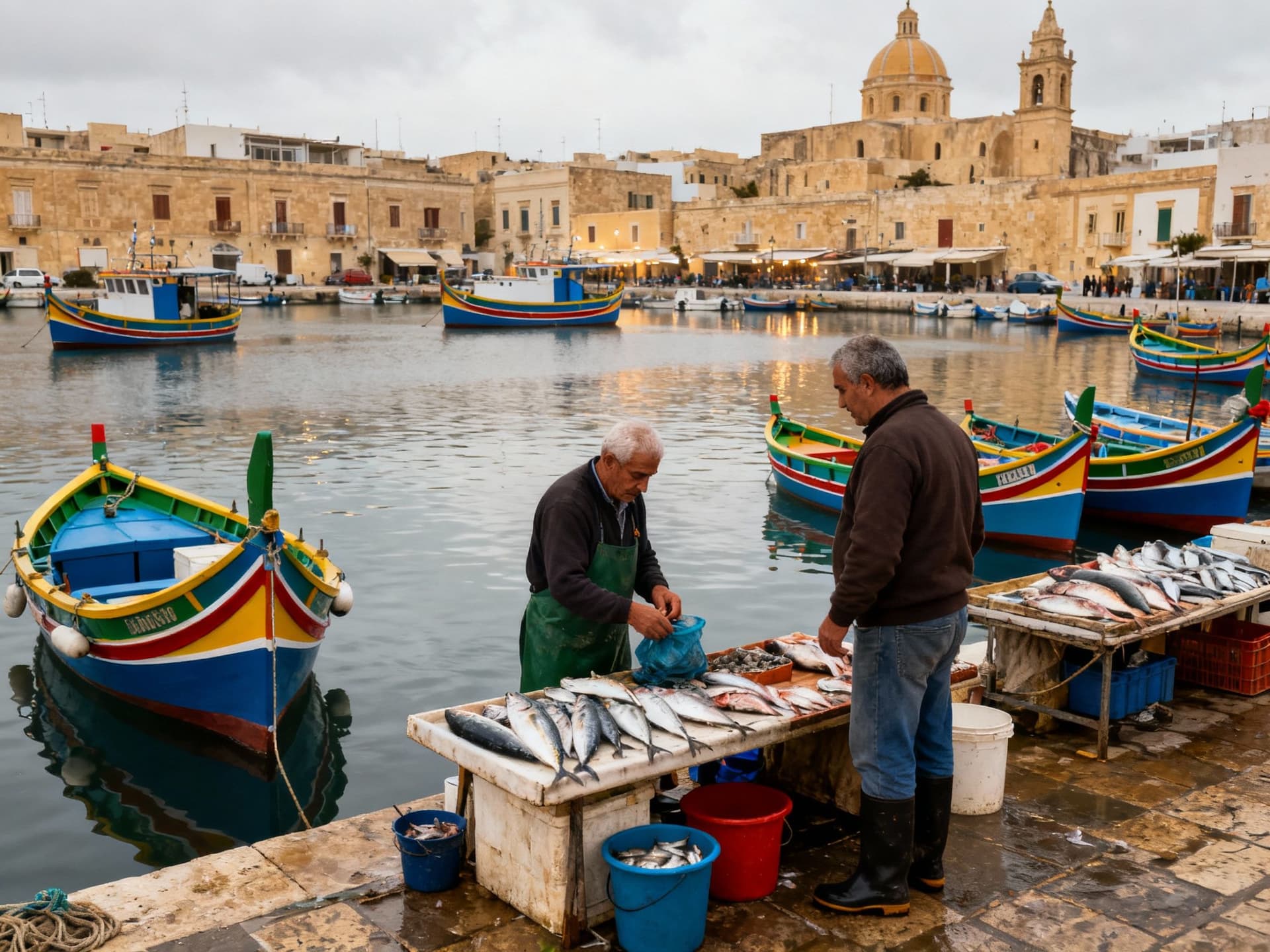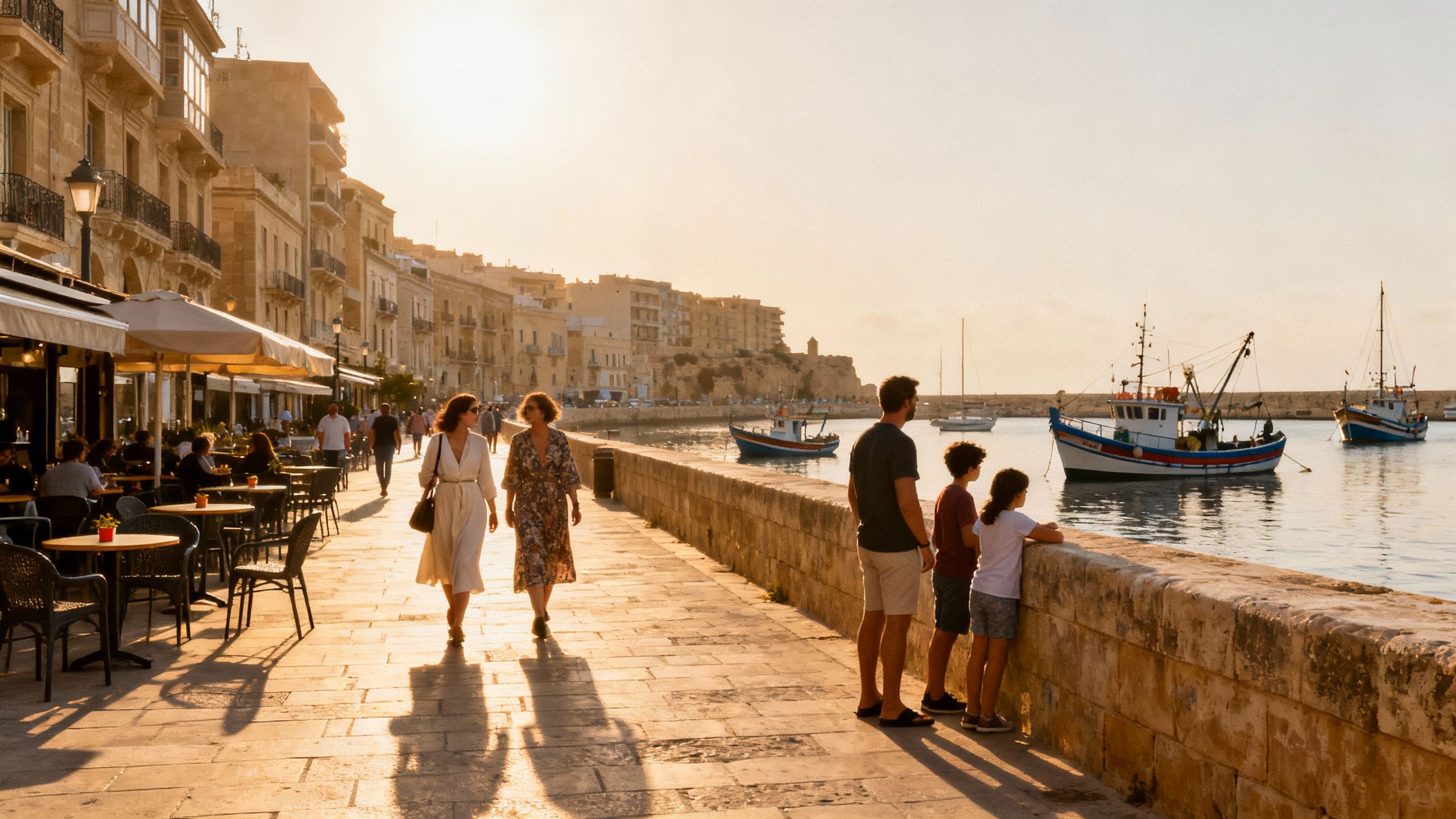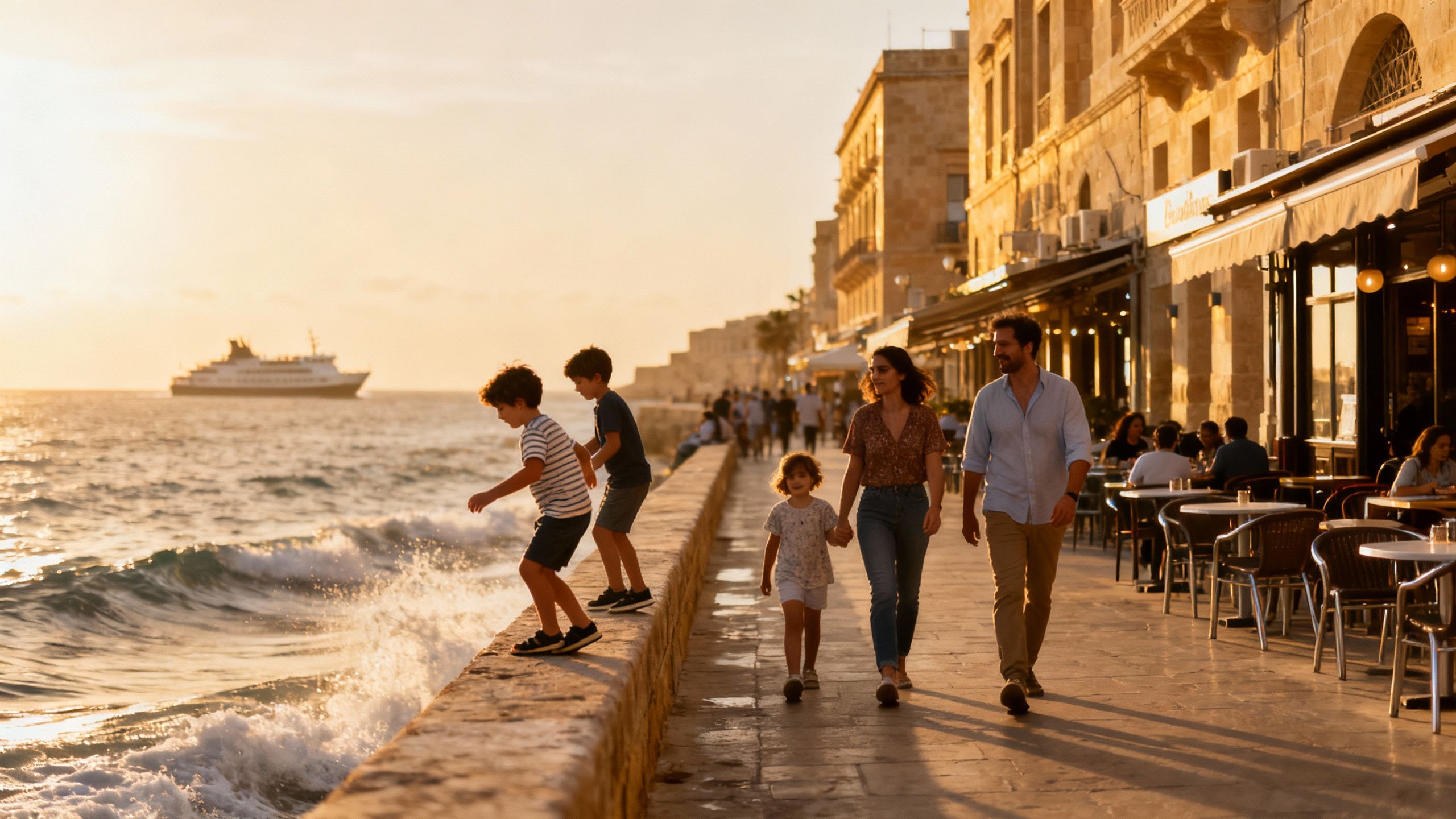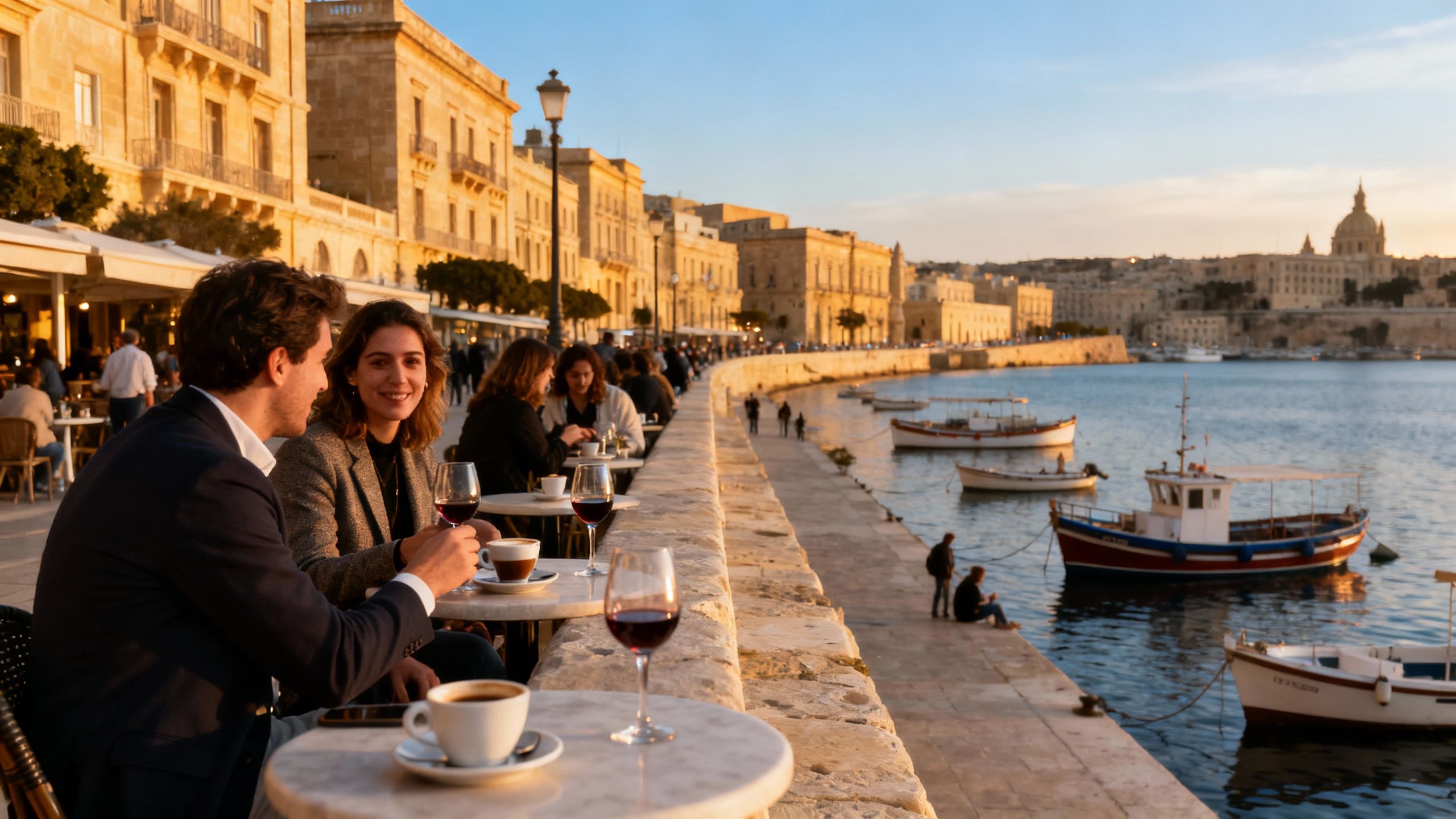Why Marsaxlokk’s Quiet Streets Are Malta’s Overlooked Value
A contrarian look at Malta’s village markets and Marsaxlokk: why quieter neighbourhoods offer lifestyle depth and resilient value for discerning buyers.
Imagine a morning in Marsaxlokk: fishermen hauling nets at dawn, coffee steam drifting from a corner kafè on Triq il-Kbira, and limestone facades warmed by low winter sun. It is not the postcard of Malta you first picture — no high‑rise promenade, no crowded nightlife — and precisely for that reason it deserves a second look. For many international buyers the village’s plainness reads as limitation; for a different buyer it reads as opportunity: quieter streets, authentic community, and prices that reflect everyday life rather than tourist theatre.
Living Maltese Life, Off the Beaten Track

Malta condenses a surprising variety of neighbourhood rhythms into a compact island. Valletta’s measured grandeur and narrow baroque lanes contrast with Sliema’s coastal terraces and the buzzy apartment life of St Julian’s. But the island’s character is best read in smaller places — Marsaxlokk’s fish market, Mdina’s hush, the Gozo ferry queues — where daily rituals persist. Choosing where to live therefore equals choosing a tempo: community markets and early dinners, or metropolitan evenings and seaside promenades.
Marsaxlokk: A Village That Keeps Time
Walk Triq il-Kbira on a Sunday and you hear the village’s calendar: traders arrive before 07:00, families pause for a long coffee, and the harbour’s luzzu boats rock with a sound that registers as belonging. Marsaxlokk resists the island’s faster currents — it has no stadium nightlife and few glass towers — but that restraint is its asset. For buyers seeking a lived-in Maltese life, the village supplies true local texture: fishmongers who know your name, small trattorias serving lampuki when in season, and a coastline that reads as domestic rather than display.
Food, Market Life and the Rhythm of Seasons
Seasonality shapes life in Malta more than many assume. Winters bring slower streets and neighbourly gatherings; summers, a tinge of tourism that concentrates along Sliema and St Julian’s. Marsaxlokk’s Thursday and Sunday markets are not performance — they are supply chains made visible: freshly grilled fish at Kinnie‑coloured stalls, citrus stalls in January, and quiet lanes that allow true relationships with local purveyors to form. That texture matters when you buy: it determines how a terrace is used, which rooms become everyday, and how a property wears over time.
- Lifestyle highlights — what living here feels like
- Sunday fish market at Marsaxlokk harbour — intimate community commerce and fresh produce
Making the Move: Lived Experience Meets Market Reality

The island’s charm coexists with measurable market pressure. National Statistics Office data and market reports show steady price rises across 2024–2025, particularly for apartments and maisonettes. That upward drift means opportunity lies less in speculative flips and more in lifestyle-led buys: properties you will inhabit for years, in neighbourhoods where rent and resale are supported by genuine local demand rather than seasonal tourism.
Property types that suit village life
In Marsaxlokk and similar villages, traditional ground‑floor maisonettes, period townhouses and modest apartments prevail. Look for original Maltese limestone, balconied facades, and terraces oriented to catch morning light or sea breezes. These features are not decorative; they determine livability: cross‑ventilation in summer, sheltered outdoor space through winter, and a durable material palette that requires repair rather than replacement.
Working with local experts who value place over price
Local agents and restoration architects are your entrée to authentic stock. They will distinguish between cosmetic staging and properties with good fabric — thick walls, original timber beams, and roof terraces that can be made year‑round. An agent who knows Marsaxlokk will also advise on practicalities that affect daily enjoyment: flood tides at certain quays, parking practices on narrow lanes, and which neighbours maintain properties conscientiously.
- Practical steps blending lifestyle and market sense
- 1. Visit in shoulder seasons (autumn/winter) to assess daily life rather than holiday masks.
- 2. Prioritise building fabric and orientation over cosmetic finishes; limestone and timber matter more than a glossy kitchen.
- 3. Use a surveyor experienced with Maltese construction to identify damp, salt ingress and roof integrity.
Insider Knowledge: What Expats Wish They’d Known
Buyers often imagine Malta as eternal summer; the real island alternates seasons with meaning. Winter months reveal how neighbourhoods function: cafés that become community salons, quieter streets where you can hear church bells, and services that slow — all of which bear on whether a property supports the life you want. Expats who integrated quickly did two things: they learned local rhythms and they invested in small local repairs that earned trust with neighbours.
Cultural integration and daily practicalities
English is an official language and many services are geared to foreigners, yet local customs persist: daily shop hours, long family meals on Sundays, and a preference for personal introductions when transacting locally. Recent policy shifts around residency and citizenship have also changed market dynamics; while high‑level investor schemes attracted certain buyers in the past, evolving regulation now favours buyers who plan to live and participate in the community rather than treat property as mere asset parking.
Longer‑term stewardship: how life and value evolve
Malta’s market has shown steady gains; yet the wisest buyers treat property as stewardship. Buying in a quieter harbour village can deliver both quality of life and resilient value if you attend to maintenance, respect local planning norms, and choose materials that age well. Over a decade, modest, well-maintained houses in authentic neighbourhoods have proven attractive to both residents and cautious investors.
Conclusion — If you want Malta to feel like home, buy the life and the fabric that supports it. Marsaxlokk and similar villages reward patience: they ask you to slow down, to know your baker and fishmonger, and to invest in the material qualities that make a house durable and a community enduring. When you combine a clear sense of lifestyle with local expertise — a surveyor who understands limestone, an agent who knows lane‑by‑lane life, a neighbour who points you to the best morning coffee — you do not merely buy property in Malta; you arrive.
Norwegian with years in Florence guiding clients across borders. I bridge Oslo and Tuscany, focusing on legal navigation, cultural context, and enduring craftsmanship.


